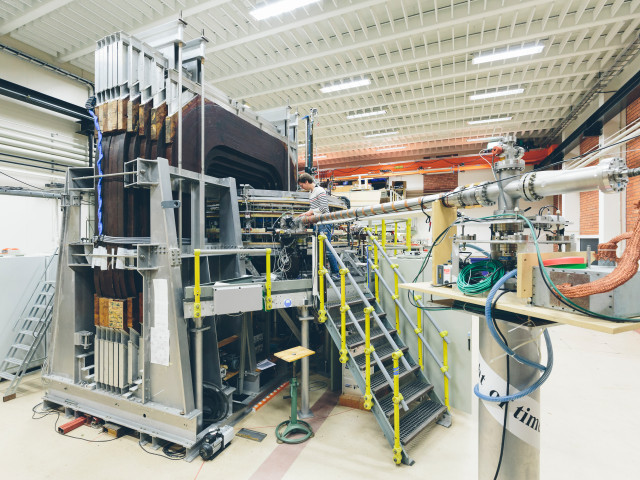- Normal and ferromagnetic metals
- Basic electron transport
- Giant magneto resistance
- Spin dependent tunneling
- Micro-magnetic spin structure
- Electronic noise in magnetic materials and devices
- Materials for spin electronics: thin film and nano-fabrication techniques
- Spin-transfer torques, current induced switching
- Spin transport in semiconductors
- Spin-valve and spin-tunnel devices in data storage, Magnetic RAM, sensors.
SK2710 Spin Electronics 8.0 credits

VT2020: the course is cancelled due to too few registered participants.
Information per course offering
Course offerings are missing for current or upcoming semesters.
Course syllabus as PDF
Please note: all information from the Course syllabus is available on this page in an accessible format.
Course syllabus SK2710 (Spring 2022–)Content and learning outcomes
Course contents
Intended learning outcomes
Your overall aim in this course is to understand the physical principles of magnetism and transport in nanostructures with a special emphasis on applications in spin-based memory and logic. A progressively better understanding means that after the course you are able to:
- identify different kinds of magnetism in solids, calculate the basic microscopic electronic parameters of materials given the necessary macroscopic characteristics, describe and calculate the main characteristics of the spin transport effects;
- compare/contrast materials with regards to their magnetic and transport properties, explain the causes of the main spin transport effects, analyze their relevance in relation to technological applications;
- theorize about the origins of magnetism and transport in solids aiming hypothetically at the ideal material(s) for spintronics, generalize device concepts as relates to spin transport, using the knowledge acquired in the course speculate about new transport devices based on spin.
Literature and preparations
Specific prerequisites
English B / English 6
Recommended prerequisites
The course will be given at the level suitable for graduate and senior undergraduate students. Modern Physics/Introductory Quantum mechanics is required. Solid State Physics (Kittel level) and Intermediate Quantum Mechanics (Griffiths level) are advantageous.
Literature
Examination and completion
Grading scale
Examination
- INL1 - Assignments, 6.0 credits, grading scale: A, B, C, D, E, FX, F
- LAB1 - Laboratory Work, 2.0 credits, grading scale: P, F
Based on recommendation from KTH’s coordinator for disabilities, the examiner will decide how to adapt an examination for students with documented disability.
The examiner may apply another examination format when re-examining individual students.
If the course is discontinued, students may request to be examined during the following two academic years.
Other requirements for final grade
One lab exercise in charge transport measurements is required (LAB1; 2 credits, grading scale P/F).
The examination will be through home project assignments (INL1; 6 credits, grading scale A-F).
Examiner
Ethical approach
- All members of a group are responsible for the group's work.
- In any assessment, every student shall honestly disclose any help received and sources used.
- In an oral assessment, every student shall be able to present and answer questions about the entire assignment and solution.